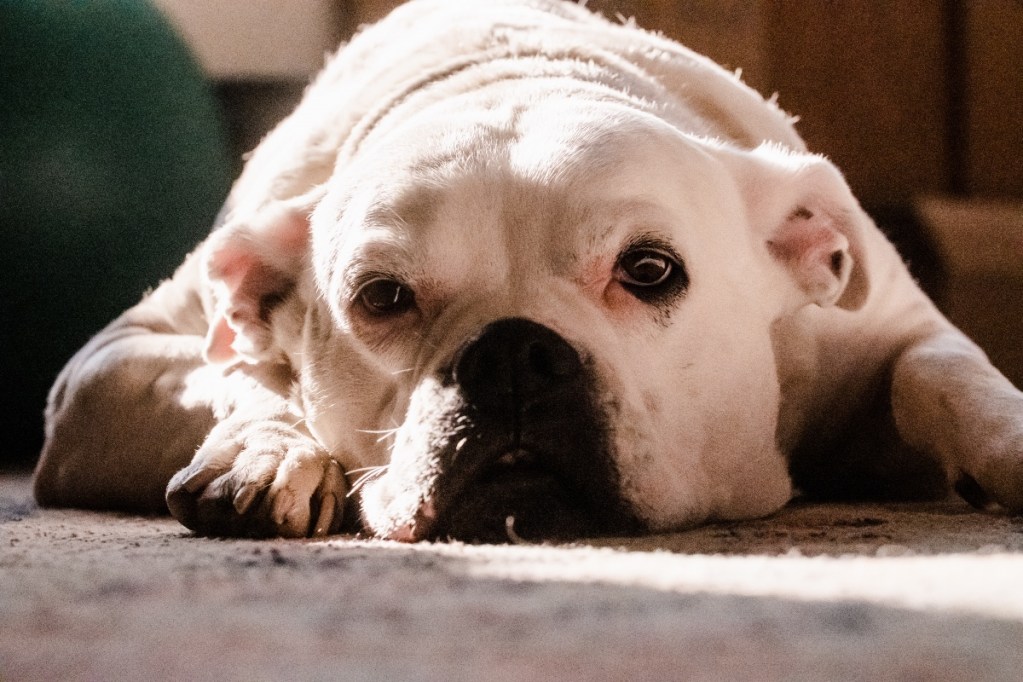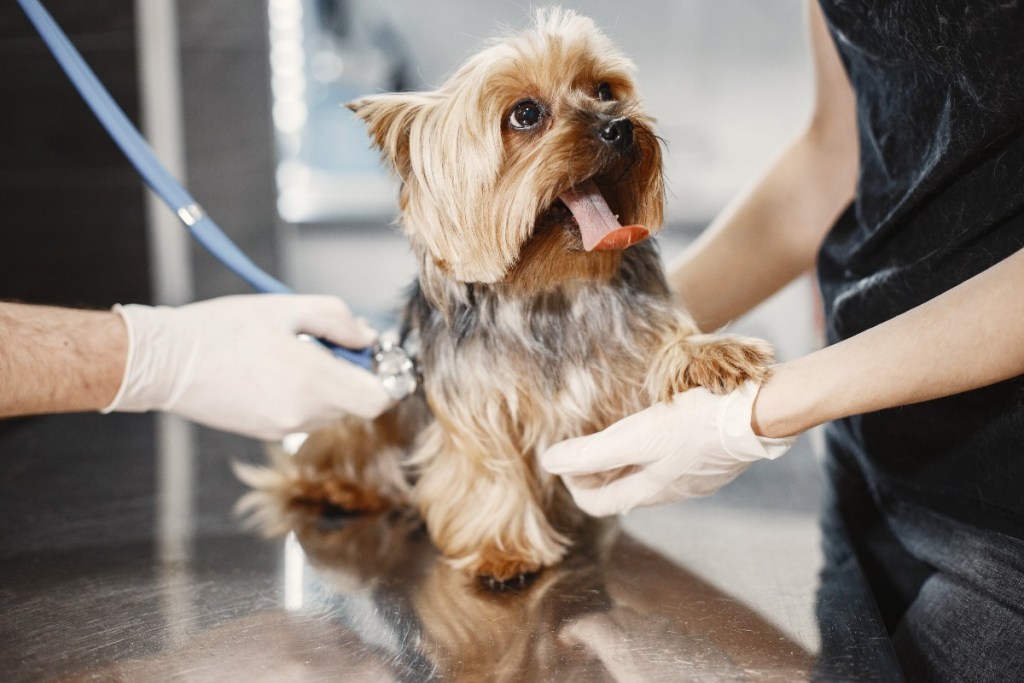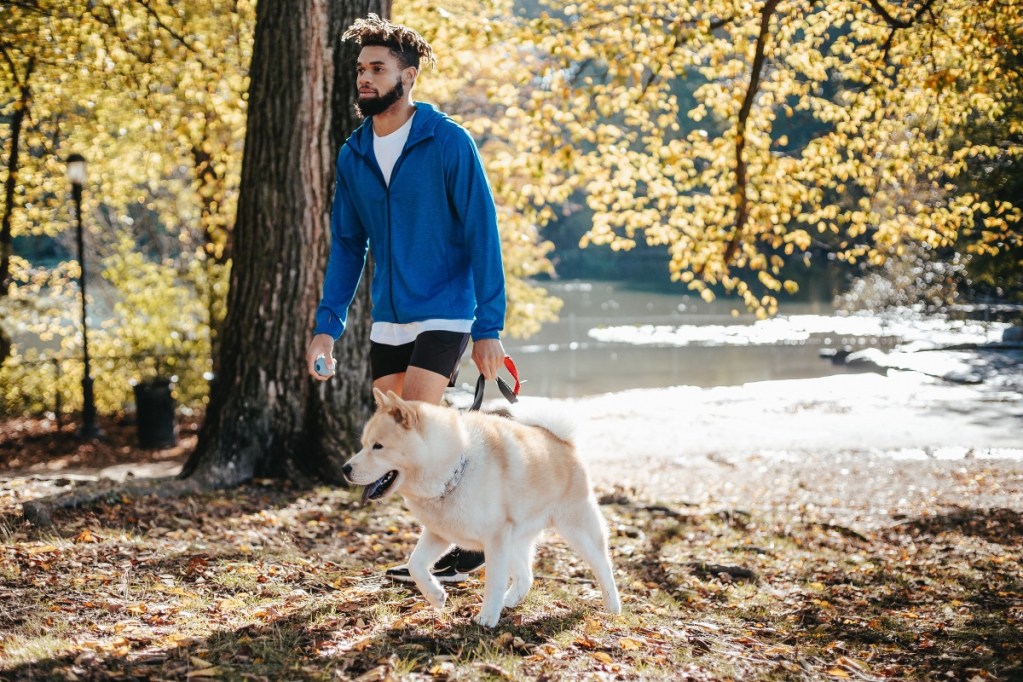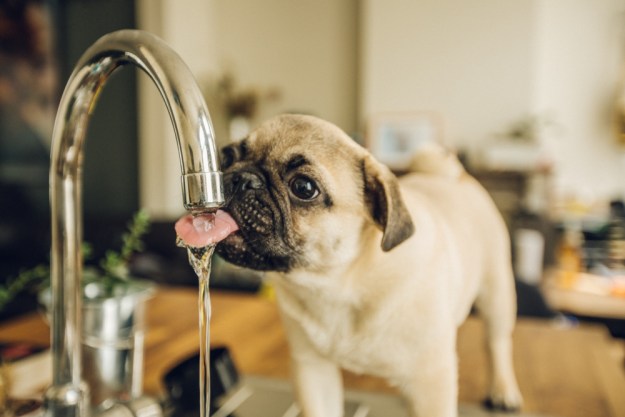A urinary tract infection, or UTI, is a common but pesky issue for humans. Though cats can get UTIs, it’s rare in the feline population. How common are urinary tract infections in dogs?
Unfortunately, it’s pretty common for vets to diagnose UTIs in dogs. We don’t like it when our pets are unwell, so this news may not be the best to hear. A UTI is a painful condition that happens when the dog’s urinary tract gets infected. It’s usually a bacterial infection.
Though common and uncomfortable, UTIs are treatable, and it’s essential to seek care to prevent the relatively minor issue from turning into a larger one. You can also take steps to decrease your pet’s risk of a UTI, such as finding the best nonprescription dog food for urinary health. Here’s what to know about urinary tract infections in dogs.

What causes UTIs in dogs?
Dogs, like humans, typically develop a urinary tract infection because of bacteria. Your dog is constantly exposed to bacteria on walks and even when they eliminate in the backyard. Sometimes, that bacteria gets onto the genitals and then enters the urinary tract, which includes the bladder, kidneys, and prostate.
Some dogs are more susceptible to UTIs, including:
- Older female pets
- Pets who have to hold their urine for long periods
- Pups with diabetes
- Dogs with kidney disease
- Immunocompromised dogs, such as ones with Cushing’s Disease
What are the signs and symptoms of a urinary infection in dogs?
You never want your dog to get a UTI, but it happens. Understanding common signs can ensure you get them care quickly and reduce the time they spend in pain. Common flags your pet may have a UTI include:
- Bloody urine
- Straining to pee
- Frequent attempts to urinate with very little pee coming out
- Straining or whining while peeing
- Sudden peeing around the house despite being reliably housebroken
- Increased licking of genitals
- Vomiting
- Changes in appetite
- Fever
- Dripping urine
If your dog displays any of these symptoms, get your vet on the line and schedule an appointment. These signs often point to a UTI, but they may also indicate another issue. Only a vet can make an appropriate diagnosis and begin treatment.

What is the treatment for UTIs in dogs?
If your dog has a UTI, you probably want them on the mend stat. First, your vet will need to diagnose your pup with a UTI formally. To do that, they’ll run a urinalysis or pee test. The vet will likely have you collect this sample at home, such as on a walk.
Your vet is looking at the pH levels of your dog’s urine and will also check for ketones and glucose (sugar), which are flags for diabetes. Your vet may also order an ultrasound to check for bladder stones, a potential side effect of a urinary tract infection in dogs.
Once your vet makes a diagnosis, treatment can proceed. How does that look? Typically, treating a UTI in dogs involves antibiotics. These medications are best prescribed by a vet. Avoid giving your pet any medication meant for human UTI treatment. The vet may also discuss dietary changes for the prevention of recurrent UTIs.

How can I prevent a UTI in my dog?
Prevention is the best medicine. In the case of a UTI, prevention protects your dog from discomfort and allows the two of you to play and cuddle happily together. Let’s discuss how you can protect your pet, including the best dog food for urinary health.
You can reduce your dog’s risk of UTI by:
- Keeping them hydrated. Leave out plenty of water, which helps their urinary tract run like a well-oiled machine by flushing out toxins.
- Feeding a well-balanced diet. The best nonprescription food for urinary health is actually standard, AAFCO-approved kibble. A well-balanced diet can protect against obesity and diabetes (these issues can also up the risk of a UTI in dogs). Portion the food in accordance with your pet’s age and weight, and ensure it makes up 90% of your pet’s diet.
- Frequent chances to go potty. Ensure you’re giving your dog plenty of opportunities to “use the facilities,” because holding urine for too long can trigger a UTI.
- Considering supplements with the vet. If your dog is constantly getting UTIs, your veterinarian may recommend supplements. They can give the best guidance on what your dog should take and how much.
You can’t completely protect your pet from getting a UTI. Sometimes, they just happen, so don’t feel bad. Simply get your dog the help they need, and know the two of you will likely return to normal soon.
No one wants their pet to feel pain, and UTIs are not comfortable for our canine companions. Quick diagnosis and treatment are the best ways to help your dog if they have a UTI. Common red flags your dog has a urinary tract infection include bloody urine or straining or whining to pee. If you notice these flags, call the vet. Prompt care can prevent the issue from worsening, such as bladder stones or a fever. Your vet will use a urine sample to diagnose the UTI. Then, treatment can begin, which usually involves antibiotics. As a pet parent, you want to protect your dog from a UTI. The best nonprescription dog food for urinary health is regular kibble — it has all the nutrients your dog needs.
Editors' Recommendations
- Why does my dog have a bald patch on their tail? Here are the answers you need
- Looking for signs your dog has ticks? These telltale symptoms mean you have a flea or tick problem
- Is your dog’s breathing problems old age or something else? What to know
- Could it be a dog paw infection? Signs, symptoms, and treatments for these pesky, painful issues
- What can I give my dog for diarrhea? 5 simple remedies to treat an upset stomach





